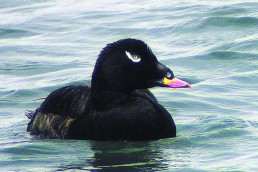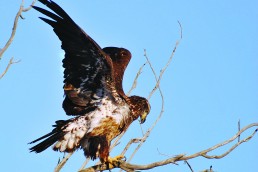Midwestern Loons, Deep-cover Fish, & More
SHARE THIS POST
Deep-cover fish
The Midwest has its own freshwater oceans—the Great Lakes. Each lake provides opportunities to catch monster fish or just relax on the beach. We associate trout and salmon with the region, but plenty of interesting ichthyological wonders are found, in particular, the deepwater sculpin. These lurk deep below the surface. In fact, they’re so deep that their discovery was based off a specimen collected from the stomach of a lake trout. Deepwater sculpin can be found at depths at 500 feet in all of the Great Lakes. The sculpin’s body is unique with its enlarged head, large, upward pointing eyes and extremely wide mouth.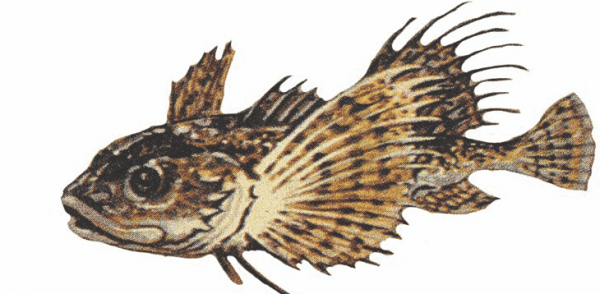
Its eyes are pointed upward to facilitate its ambush technique, where it nestles in the sand and waits for prey overhead. Their wide and flat gills also support their means of acquiring food, with their fins spreading horizontally, bolstering the sit-and-wait technique.
Chinese ‘take’ out
Invasive species come in all forms, from bacteria to large mammals. We can find carp in the waters and in the forests plants like buckthorn inhabit our native ecosystems. There are insects from other countries that are invasive, and some are not even from this continent. In the 1800s, Chinese mantises were first introduced into the U.S. Some believe they were transplanted on purpose for pest control, while others maintain it was accidental.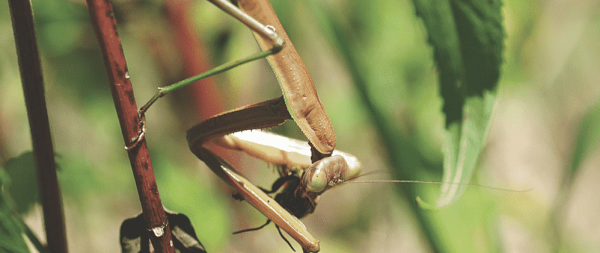 The foreign mantises were first discovered in the Northeast, but have quickly spread throughout the country and are often more common in regions than the native mantises. Being the largest mantis in North America at over 4 inches, there’s virtually nothing these won’t eat. If they can successfully catch and kill something they will not hesitate, including other mantises. Its color is either brown or green with a stripe running horizontally down its wings. Again, size dictates whether it’s a native species or Chinese.
The foreign mantises were first discovered in the Northeast, but have quickly spread throughout the country and are often more common in regions than the native mantises. Being the largest mantis in North America at over 4 inches, there’s virtually nothing these won’t eat. If they can successfully catch and kill something they will not hesitate, including other mantises. Its color is either brown or green with a stripe running horizontally down its wings. Again, size dictates whether it’s a native species or Chinese.
Respect your ‘Boxelders’
We’ve all seen large swarms of boxelder bugs gather on houses and other structures. In spring, they emerge from cracks and crevices from awnings and siding. The females lay eggs near maple trees, and preferably boxelder trees. When the eggs hatch later in the summer the juveniles find their way to the boxelder trees. These trees are their primary source of food, and, interestingly, these beetles will only be found on female boxelder trees, which are identified by their lime-green flowers. As the juveniles mature and the prior generation dies off, these insects prepare for winter. Falling temperatures cause the boxelder bugs to seek out warmer areas for basking. Fortunately for the boxelder bug, your house provides a wonderful area. Removal of boxelder trees can help reduce the population, but there are no sure-fire techniques. Remember, if tree removal is being considered, be positive on your identification, and don’t chop down the wrong tree.
Are you enjoying this post?
You can be among the first to get the latest info on where to go, what to use and how to use it!
‘You’re a Midwestern Loon’
A familiar sight on lakes in the Upper Midwest is the common loon, and can often be heard. Northerners can see loons in their most beautiful plumage, but that’s not the case for southerners. Its plumage when it’s down there is quite different. Instead of being jet black with beautiful white flecking, the loon’s entire body when it’s migrated to the South is a drab gray. Their wings may have some white outlining, but for the most part, they’re completely gray except for a white belly. The plumage we are used to up here are on ones that are ready for breeding, which takes place upon their arrival in spring. Common loons are a signature bird of the North, with their mysterious call having an almost soothing effect. Next time you see one take pleasure in the fact that you’re seeing a loon at its best.
The fur is gonna fly
The fur-trapping craze of the 1800s did a lot of damage to native mammals. Some harm has been reversed, but some species have not recovered. 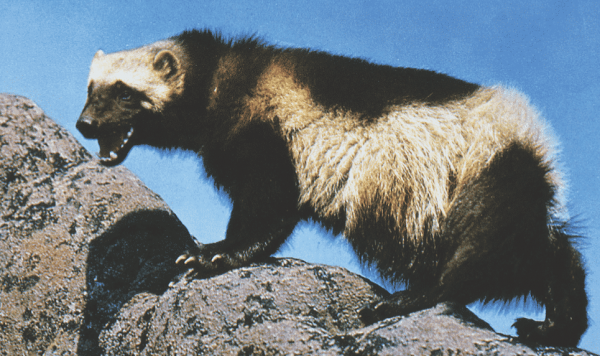 Wolverines are the largest terrestrial member of the weasel family, and were heavily trapped throughout the 1800s. In the northern reaches of the Midwest, wolverines are occasionally seen, but Canada and Alaska hold the largest populations in North America. If you see one, the animal was likely just popping in from Canada, as their home range can be as large as 240 miles. Within their extensive range, very little bothers them because of their stocky and intimidating build. Wolverines are extremely strong and are known for taking down prey much larger than they are. Surprisingly, for their strength, they usually don’t weigh much more than 60 pounds and measure 40 inches. Like many mammals, wolverines have thick brown fur, but their fur is resistant to freezing. Their fur’s thickness and resistance to frost are two contributing factors as to why their coats were and still are so valued. More mammals are returning to their historic ranges, and with solid conservation practices and support from the public we may one day find the wolverine return to greatness in numbers.
Wolverines are the largest terrestrial member of the weasel family, and were heavily trapped throughout the 1800s. In the northern reaches of the Midwest, wolverines are occasionally seen, but Canada and Alaska hold the largest populations in North America. If you see one, the animal was likely just popping in from Canada, as their home range can be as large as 240 miles. Within their extensive range, very little bothers them because of their stocky and intimidating build. Wolverines are extremely strong and are known for taking down prey much larger than they are. Surprisingly, for their strength, they usually don’t weigh much more than 60 pounds and measure 40 inches. Like many mammals, wolverines have thick brown fur, but their fur is resistant to freezing. Their fur’s thickness and resistance to frost are two contributing factors as to why their coats were and still are so valued. More mammals are returning to their historic ranges, and with solid conservation practices and support from the public we may one day find the wolverine return to greatness in numbers.
MWO
SHARE THIS POST
Did you enjoy this post?
You can be among the first to get the latest info on where to go, what to use and how to use it!
Calvin Vick
MidWest Outdoors’ “Nature Notes” columnist Calvin Vick is an undergraduate studying biology, with an emphasis on herpetology, at the University of Central Arkansas. His primary interests are venomous snakes and salamanders. He spends most of his free time photographing the two.

